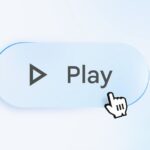 When you’re working on developing AI solutions, one of the biggest challenges is understanding how your algorithms will perform in real-world scenarios. Sure, they might look great on paper, but the real world can be a different beast altogether. Testing thoroughly is crucial, but doing so outside of a lab can be expensive and risky. That’s why many researchers turn to simulations, even though they sometimes give AI more credit than it deserves.
When you’re working on developing AI solutions, one of the biggest challenges is understanding how your algorithms will perform in real-world scenarios. Sure, they might look great on paper, but the real world can be a different beast altogether. Testing thoroughly is crucial, but doing so outside of a lab can be expensive and risky. That’s why many researchers turn to simulations, even though they sometimes give AI more credit than it deserves.
In an enlightening article published in Nature Machine Intelligence, ETH mathematician Juan Gamella introduces a novel approach to this problem. He’s come up with what he calls ‘miniature laboratories’ or ‘mini-labs.’ These are essentially small, controlled environments where AI algorithms can be tested using real measurement data, rather than just simulations. Think of them as a playground where you can really see how your AI performs.
These mini-labs are built on solid physics principles, allowing researchers to verify their algorithms across a variety of problems. If an AI model doesn’t quite hit the mark, you can tweak and refine it early on in the development process. Gamella’s initial mini-labs are based on physical systems that reflect real-world challenges. For example, his first mini-lab simulates dynamic systems like wind, which is perfect for testing algorithms designed to solve control problems. Another mini-lab focuses on light physics, which not only helps AI learn these laws but also aids in scientific discoveries.
Interestingly, these mini-labs are about the size of a desktop computer and can be operated remotely, much like historical scientific demonstrations. Gamella likens them to wind tunnels used in aircraft design, serving as a preliminary check before moving to full-scale testing. They bridge the gap between simulation and reality, which is crucial for AI that needs to interact with the physical world. This is especially relevant in fields like robotics, where algorithms are often trained in simulations before being deployed in the real world.
Gamella, who transitioned from working in mathematics to robotics and AI research, aims to create tools that help scientific inquiry. His mini-labs aren’t just for engineering—they have broader applications. For instance, he collaborated with the Charité University Hospital in Berlin to explore their use in AI for cell and synthetic biology, although the costs were quite high. On the other hand, his light tunnel mini-lab is already being used in industrial production to address optical issues.
These mini-labs also provide a platform for testing new methods to improve the predictions of language models in real-world settings. Gamella uses a ‘silver bullet’ strategy to validate his mini-labs, demonstrating their value in causal AI research. Understanding cause-and-effect relationships is crucial for reliable AI models, which often rely too heavily on correlations. Causality is essential in fields like medicine, economics, and climate research. Developing causal AI requires new statistical methods to manage complex causal influences.
Gamella is working with ETH professors Peter Bühlmann and Jonas Peters on causal AI research, using these mini-labs for testing. Finding data with known causal relationships is tough, but the mini-labs offer a solution. They allow for testing algorithms’ ability to learn correct causal models, identify influencing factors, and perform under unusual conditions. Peter Bühlmann praises the mini-labs for their contribution to causality research, offering unprecedented validation for new algorithms.
Gamella is also excited about the educational benefits of these mini-labs. They provide a safe space for students to apply theoretical knowledge practically. Lecturers around the world have shown interest, with pilot studies already underway at ETH Zurich and the University of Liège.








